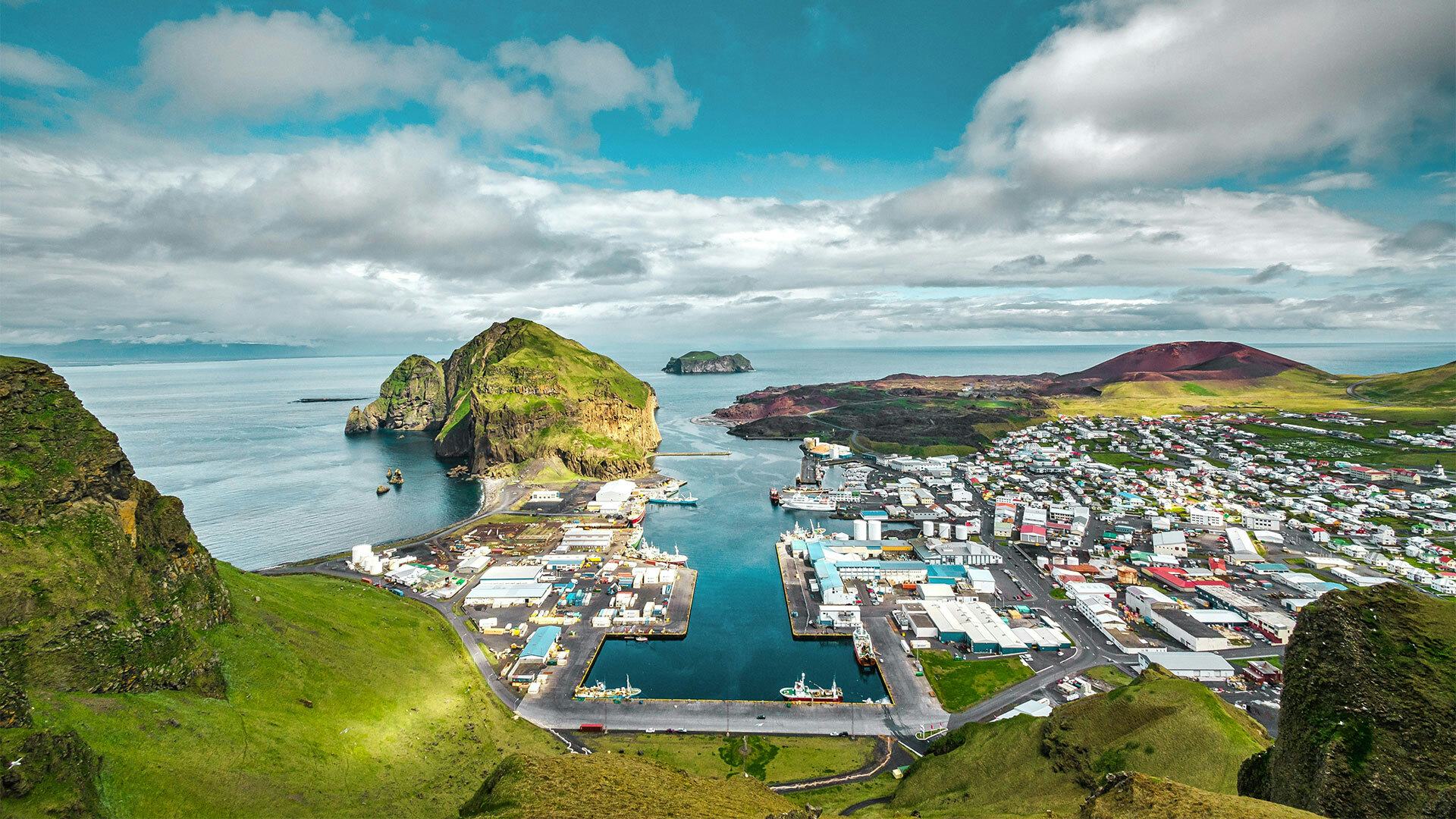
The rapid growth in port activities including aquaculture, tourism, and cargo and container handling, and an increase in port traffic calls for the development of the port of Vestmannaeyjar.
About the port of Vestmannaeyjar
The port of Vestmannaeyjar is one of the largest ports in Iceland. The port belongs to the basic transport network of the country. The port-related activities significantly contribute to the business life of the Vestmannaeyjar Islands. Furthermore, over 5% (in 2021) of the Icelandic ports’ revenue was from the port. Therefore, the port of Vestmannaeyjar is important for both the local community and the country as a whole. The business life in Vestmannaeyjar is mainly based on two main pillars, the fishing industry and tourism. Throughout history, the maritime industry has been the basis of economic life in the Vestmannaeyjar Islands, and about 10 - 12% of the country's fishing permits are registered on ships with the home port of the port of Vestmannaeyjar. The port of Vestmannaeyjar is considered the last port of call for container vessels from the countries. Tourism is another industry that has seen significant growth in the last decade in the Vestmannaeyjar Islands. Cruise and expedition vessels are increasingly calling the port on the way to Iceland. Moreover, transport to and from the Vestmannaeyjar Islands has been strengthened in recent years.
Developing a sustainable plan
The diverse activities that take place in the port of Vestmannaeyjar have put a significant strain on the port infrastructure, services, and operation. Furthermore, the growing number of port users demands an increase in the port capacity. However, the port’s geographical location and the limited land in and around it, hinder capacity improvement and creating synergy between growing port activities. Moreover, the objectives of port users are divergent and even conflicting. In this context, developing a sustainable plan for the port of Vestmannaeyjar, to account for environmentally friendly port operations, in the most socially responsible manner, and to yield positive impacts on the quality of life of the surrounding community is crucial. The development of a sustainable plan for the port of Vestmannaeyjar is a challenging task.
EFLA's solution
A planning analysis was carried out aiming at meeting the growing demand of port users for adequate infrastructure, operations, and services, in the short- and long-term horizons. The main port stakeholders were identified. The needs and objectives of the stakeholders were recognized and prioritized in the planning process. Different planning horizon was presented to strategically increase the capacity of the port and thus meet the demand of stakeholders. To support investment decisions regarding the strategic development of ports 1- marine traffic (i.e., vessel call and vessel size), 2- cargo flow (containerized and non-containerized), 3- port activities, and 4- regional and national developments were analyzed and forecasted. Existing port infrastructure and services were evaluated. An analysis of the integration between existing port activities was carried out to assess whether the activities are well located in the port area and there is harmony between them. Met-ocean parameters were simulated and analyzed to examine the effect of different port development scenarios. The port hinterland connections as well as traffic flow within the port were analyzed considering a variety of factors such as the capacity of the infrastructure, heavy transport, number of passengers, interaction of different types of traffic, and safety. Furthermore, the socio-economic analysis was conducted to explore the impacts of port development.
EFLA's result
The port stakeholders demand improvements to the port infrastructure to meet their current and future needs. Containerized and non-containerized cargo flow shows a growing trend. Marine traffic in terms of vessel size and vessel sizes will increase particularly in the case of cruise vessels. The increase in port activities as well as the growing number of port users will increase traffic to and from the port and in the port area in the coming years. Different port development plan for different time horizon was presented to meet the demand of stakeholders. Solutions for better hinterland connections were presented to not only alleviate the load on transport infrastructure but also increase the use of environmentally friendly transport systems. The strategic development of the port of Vestmannaeyjar will significantly increase the income of the port revenue in real terms in the coming decades. The flexibility of the plan facilitates the adaption of the port to ever ever-increasing and changing demand of stakeholders during the planning horizon. This facilitates the sustained growth of the port and ensures the competitiveness of the port of Vestmannaeyjar in the future.